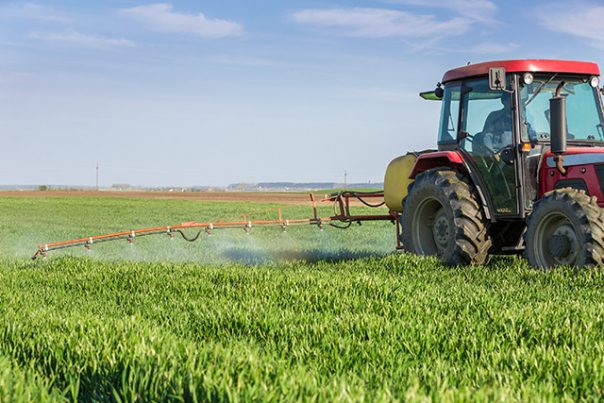
Metalaxyl — toxicity, side effects, diseases and environmental impacts
Saturday, November 18, 2017 by Zoey Sky
http://www.naturalpedia.com/metalaxyl-toxicity-side-effects-diseases-and-environmental-impacts.html

Metalaxyl is a systemic, benzenoid fungicide. It is a clear to pale yellow viscous liquid with a weak odor at 97.2 percent purity, and it darkens with reduced purity. Metalaxyl is often supplied as a soluble concentrate that is mixed with water and used as a spray.
Metalaxyl is used in mixtures as a foliar spray for tropical and subtropical crops, soil treatment for control of soil-borne pathogens, and seed treatment to control downy mildews. Experimental-use permits are in effect authorizing the application of metalaxyl on some food crops, but it is mostly used on tobacco, ornamentals, conifer, and turf.
Metalaxyl is also known as Ridomil, 57837-19-1, Allegiance, Metanaxin, Metasyl, Apron, Jiashuangling, Metalaxil, Metaxanin, Subdue, Ridomil Vino, Apron FL, Apron SD 35, IPO-FS, Ridomil 2E, and Subdue 2E.

List of known side effects
Metalaxyl is harmful if swallowed, and it can cause an allergic skin reaction. It is also harmful to aquatic life, with long-lasting effects.
Metalaxyl does not induce any acute poisoning symptoms in humans. In animal studies, metalaxyl can cause slight eye and skin irritation.
Body systems affected by metalaxyl
Metalaxyl is generally of low acute toxicity but it is a moderate eye irritant and has been placed in Toxicity Category II, which indicates the second highest degree of acute toxicity, for eye irritation effects.
In a subchronic feeding study using rats, reduced food consumption and liver cell effects were observed at the highest dose tested. In a dermal study using rabbits, no treatment-related effects were observed.
In a chronic toxicity study using beagle dogs, blood serum enzyme effects and increased liver weights were noted in the highest dose group. A study using rats resulted in liver effects.
Cancer studies using rats and mice raised concerns about the incidence of thyroid, adrenal, and liver tumors. The United States Environmental Protection Agency (EPA) reviewed this issue in 1985 and concluded that the studies demonstrated that metalaxyl did not have carcinogenic potential in laboratory animals.
In December 1985, the EPA classified metalaxyl as a Group E carcinogen, or as a chemical that does not show evidence of carcinogenicity for humans. A developmental toxicity study using rats resulted in maternal toxicity and fetotoxicity at the higher dose levels, but no treatment-related developmental effects were noted in a study using rabbits.
Metalaxyl does not cause reproductive toxicity or mutagenicity. A tobacco smoke inhalation study using rats indicates that toxicological effects beyond those associated with heavy cigarette smoking are unlikely.
Items that can contain metalaxyl
Metalaxyl is a fungicide used to control diseases caused by air- and soil-borne pathogens. It is used to control pests such as foliar and tuber blight, downey mildews, Pseudoperonospora humuli, Phytophthora infestans, and Peronospora tabacina.
Metalaxyl is registered for use on over 100 agricultural crops and more than 30 seed treatment uses. It is also registered for ornamental and turf use. More than 90 percent of the total poundage of metalaxyl is used domestically in the following ten crops or sites: tobacco, turf, potatoes, ornamentals, soybean (seed treatment), onions, citrus, cucurbits, tomatoes, and cotton.
How to avoid metalaxyl
Always refer to the product label for personal protective clothing/equipment when handling metalaxyl. Do not eat, drink, smoke, or apply cosmetics in areas where there is a potential for exposure to metalaxyl. Always wash thoroughly after handling.
To avoid eye contact, wear safety glasses with side shields or chemical goggles. To avoid skin contact, wear rubber gloves, rubber boots, long-sleeved shirt, long pants and a head covering. To avoid breathing dust, wear a pesticide respirator with particulate prefilters.
Where to learn more
Summary
Metalaxyl is a systemic, benzenoid fungicide.
Metalaxyl is used in mixtures as a foliar spray for crops, soil treatment for soil-borne pathogens, and seed treatment for downy mildews.
Metalaxyl is harmful if swallowed and can cause an allergic skin reaction. It is also harmful to aquatic life.
Sources include:
Tagged Under: Tags: metalaxyl





